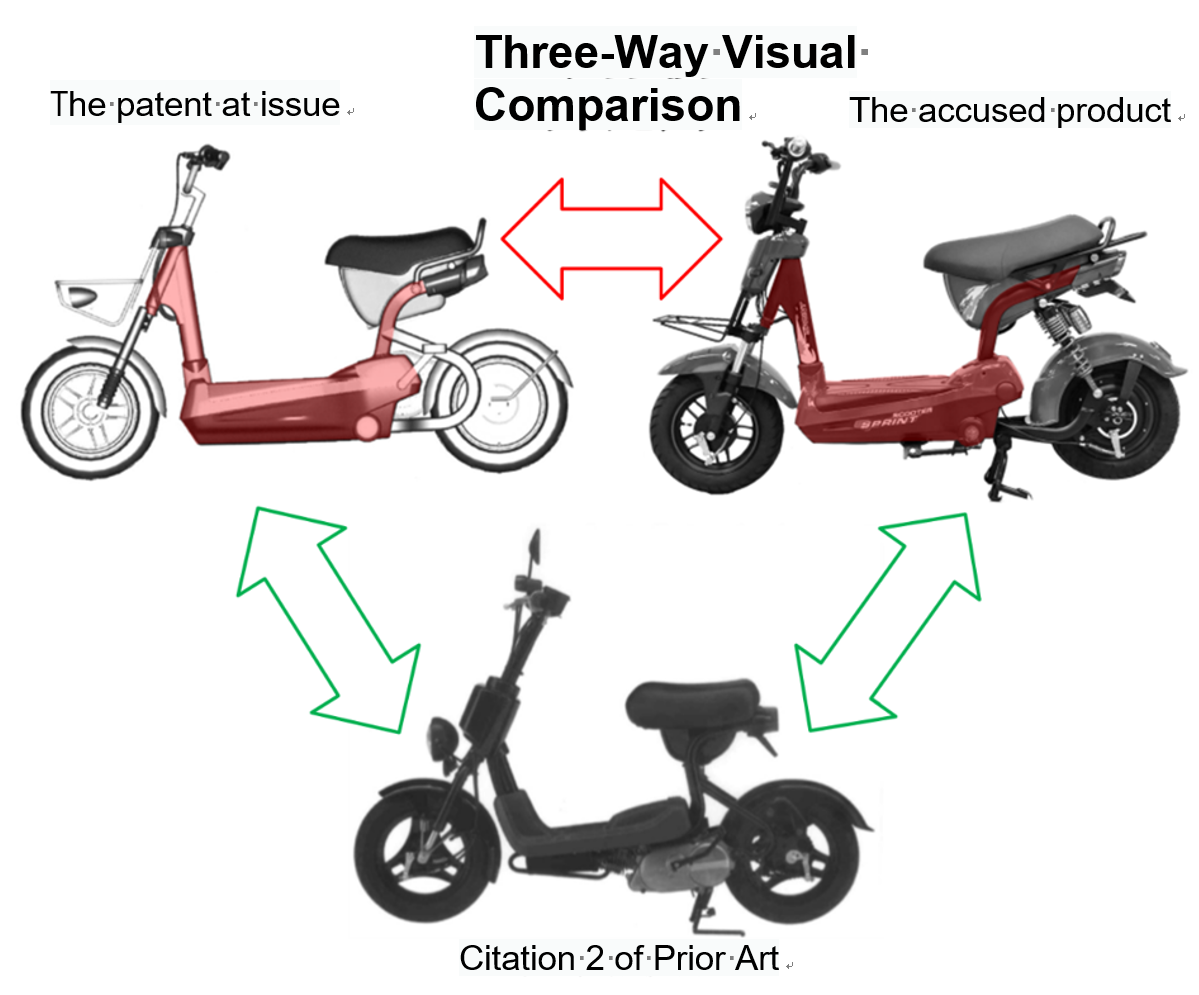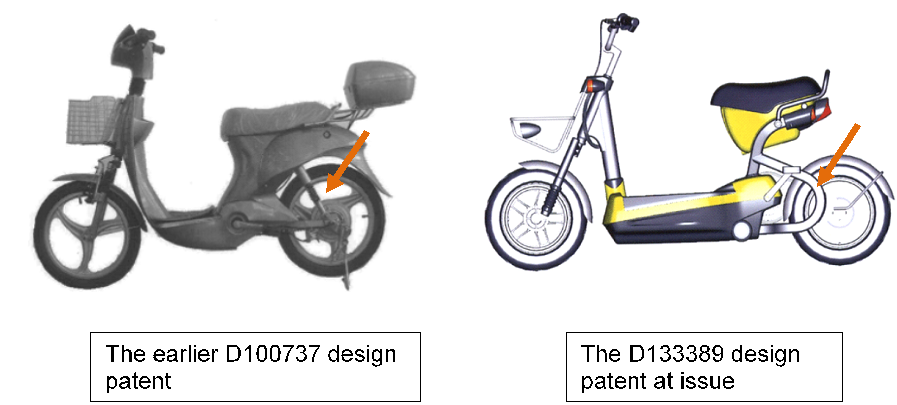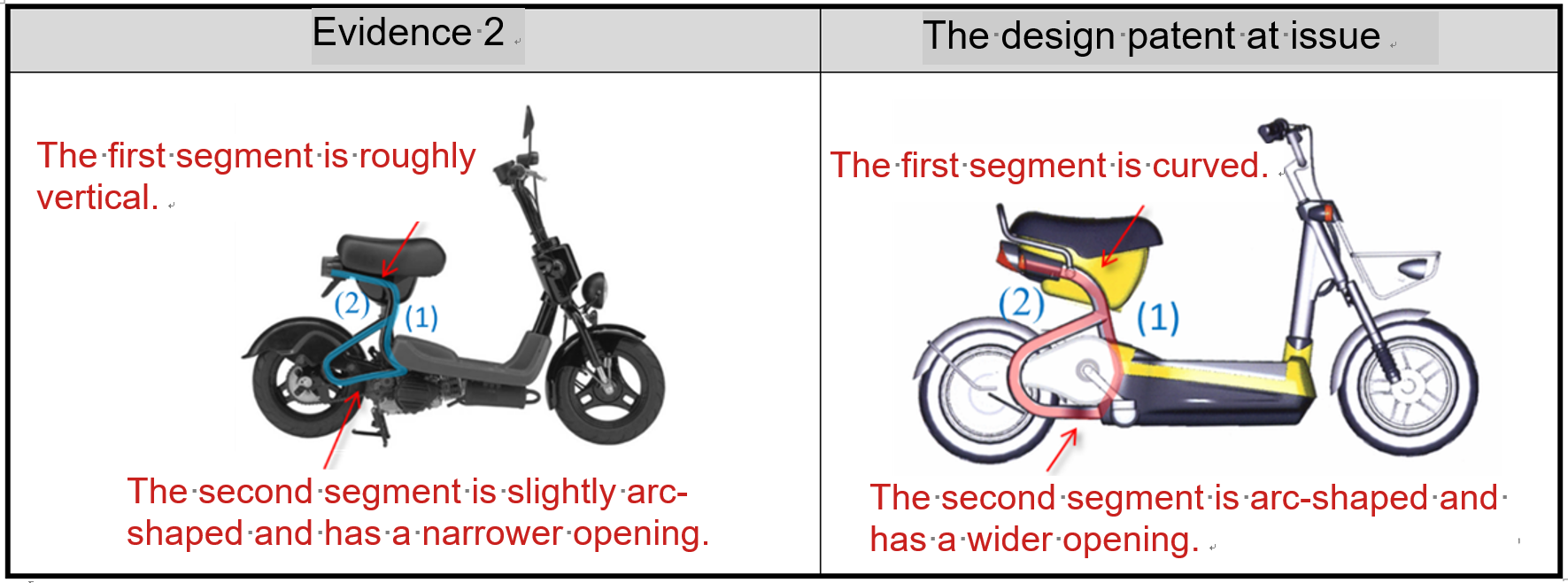Newsletter
Recent Cases of Design Patent Infringement: Overall Observation in Appearance and Identification of Salient Features
According to Article 136 of the Patent Act, the patentee of a design patent has the exclusive right to prevent others from exploiting the design or similar design(s) without the patentee’s consent. In other words, design patent infringement means one’s exploitation of the design or similar design(s) without the patentee’s consent. However, it is difficult to determine whether the two designs are "similar" in terms of overall impression when it comes to an article such as a "vehicle," which consists of many parts that make up the overall appearance. To date, most cases follow the “Essentials for Patent Infringement Determination” (專利侵權判斷要點) compiled by the TIPO in 2016 for public reference, which stipulates that the determination on whether the overall visual impressions of the design of the accused product and that of the design patent at dispute may “confuse” people should be made from an ordinary consumer's perspective, by way of overall observation and comprehensive evaluation, and based on salient features, i.e., the "parts or features that can easily attract an ordinary consumer's attention" (including the "design features of the patent at dispute that are obviously different from prior art" and the "parts that are readily visible in normal use"). However, the selection and weighting of salient features varies from person to person. In a recent case involving a design patent infringement of electric bicycles/motorcycles (hereinafter called the "Case"), the opinions of the first tribunal (2019 Min Zhuan Su Zi No. 31 judgement), the second tribunal (2020 Min Zhuan Shang Zi No. 6 interlocutory judgement) and the third tribunal court (2022 Tai Shang Zi No. 487 civil judgement) showed that the court’s selection and opinion on the salient features have a decisive impact on the result of the judgement.
Both the first and second tribunals in this case generally considered that the patent at issue and the accused infringing product (the product at issue) were identical or similar in appearance of the front end, the pedaling part (together with the X-shaped pattern thereon), the seat cushion, the storage compartment, the seat post, etc., which belong the main body of the bike. However, the first tribunal held that the design patent at issue and the accused infringing product were neither identical nor similar to each other in the overall appearance because the inverted U-shaped rear fork rack provides the seat cushion and the storage box with a "suspended" visual impression, which is obviously not identical to the shape of the shock absorber and rear fork rack of the product at issue. In addition, the design at issue and the accused product have different designs in "handlebar," "headlight" and "basket," which are essential parts frequently used and easily noticed by an ordinary consumer. The second tribunal, on the other hand, held that there is slight difference between the tilt angle of the shock absorber of the accused product and the upper end of the inverted U-shaped rear fork rack of the patent at issue. Also, the shock absorber of the accused product is installed out of the need of shock absorption and has long been seen in prior art (Evidence 3). The second tribunal further held that the design of the "frame" determines the salient features of the motorcycle model and thus is the core of the design. In addition, the common features of the accused product and the patent at issue reside in the main frame and the seat cushion which take up a large visual area and are readily visible in normal use and thus are sufficient to affect the overall visual impression of an ordinary consumer. The different features mainly reside at the front and rear end portions, which scatter and take up a smaller part of the overall visual area and thus do not affect the overall visual impression. Hence the second tribunal held that the patent infringement was established.
In determining the patent infringement, the second tribunal adopted one more step than the first tribunal: Three-Way Visual Comparison Test. The second tribunal compared the accused product with Citation 3, Citation 4, Citation 5 and Citation 6 at the same time (one of the three-way comparison tests conducted by the second tribunal is reproduced below) to understand the extent of similarity among the patent at issue, the accused product and the prior art references and thereby determine whether the accused product and the patent at issue are similar in appearance. Ultimately, the second tribunal concluded that the appearance of the accused product is closest to that of the patent at issue. This comparison test allows the court to quickly and visually determine whether the accused infringing product adopts the feature of the patent at issue that is different from the prior art.




